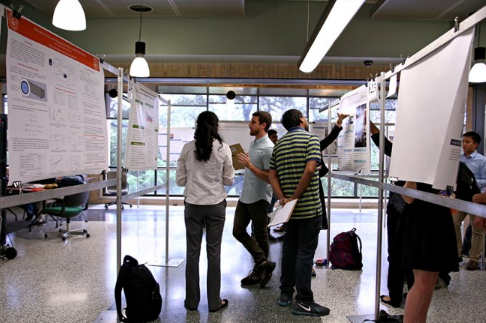One of the tenets of project-based learning, as well as preparing students to work in 21st century environments, is that student work is public. Students need to have their work assessed, critiqued, evaluated, appreciated and experienced by others beyond their teacher. Student work needs to be seen by as many people as possible including, but not limited to teachers, peers, school leaders, parents, business partners, community members, specific career professionals and experts. This is predicated on core concepts related to relevance, engagement, skill development and student ownership. The more we showcase and exhibit student work, the more students care about producing high quality work. If one is wondering about all of the ways to get student work to be public, here is an attempt to create a list:

School can host a public student showcase or exhibition focused on student work.
A teacher can host a public student showcase or exhibition focused on student work for his or her class.
A school district can host a public student showcase or exhibition focused on student work for his or her class.
Schools can feature student work at any or all school events (sports events, open houses, back-to-school nights, meetings, fundraisers, etc.).
Schools can share student projects on school website.
Teachers can share student projects on teacher website.
Students can share their projects on their own websites - i.e. developing digital portfolios.
Schools can share student projects on their social media (Facebook Twitter, Instagram, YouTube and many others).
Teachers can share student projects on their class and personal social media accounts.
Students can feature their own projects on their own social media accounts.
Students can present work at school board meetings.
Students can present work at city council meetings.
Students can present work at professional gatherings and business events.
Teachers/Schools can invite community members to classes or events for student presentations.
Teachers/Schools can bring in professionals related to student work areas for presentations.
Teachers/Schools can facilitate students entering contests or competitions (thousands of online contests exist in areas such as art, writing, video, digital work, design and much more).
Teachers/Schools can bring classrooms together for presentations and exhibitions of student work.
Students, teachers, school leaders and school district officials can share student work with local media outlets.
See if local businesses have need or applications for any of the student projects or services that students can offer.
Teachers/Schools can ask students for other ways to share and showcase their work.
 .
.
A teacher can host a public student showcase or exhibition focused on student work for his or her class.
A school district can host a public student showcase or exhibition focused on student work for his or her class.
Schools can feature student work at any or all school events (sports events, open houses, back-to-school nights, meetings, fundraisers, etc.).
Schools can share student projects on school website.
Teachers can share student projects on teacher website.
Students can share their projects on their own websites - i.e. developing digital portfolios.
Schools can share student projects on their social media (Facebook Twitter, Instagram, YouTube and many others).
Teachers can share student projects on their class and personal social media accounts.
Students can feature their own projects on their own social media accounts.
Students can present work at school board meetings.
Students can present work at city council meetings.
Students can present work at professional gatherings and business events.
Teachers/Schools can invite community members to classes or events for student presentations.
Teachers/Schools can bring in professionals related to student work areas for presentations.
Teachers/Schools can facilitate students entering contests or competitions (thousands of online contests exist in areas such as art, writing, video, digital work, design and much more).
Teachers/Schools can bring classrooms together for presentations and exhibitions of student work.
Students, teachers, school leaders and school district officials can share student work with local media outlets.
See if local businesses have need or applications for any of the student projects or services that students can offer.
Teachers/Schools can ask students for other ways to share and showcase their work.
Naturally, there are probably way more than 20 ways to exhibit, showcase and feature student work. If teachers and schools focus on this as a priority, they can, along with students, continually evolve new ways to maximize one’s community and technology in order to get all student work public.
Great post with great ideas. It will boost the confidence of students and help them in more than one way.
ReplyDelete